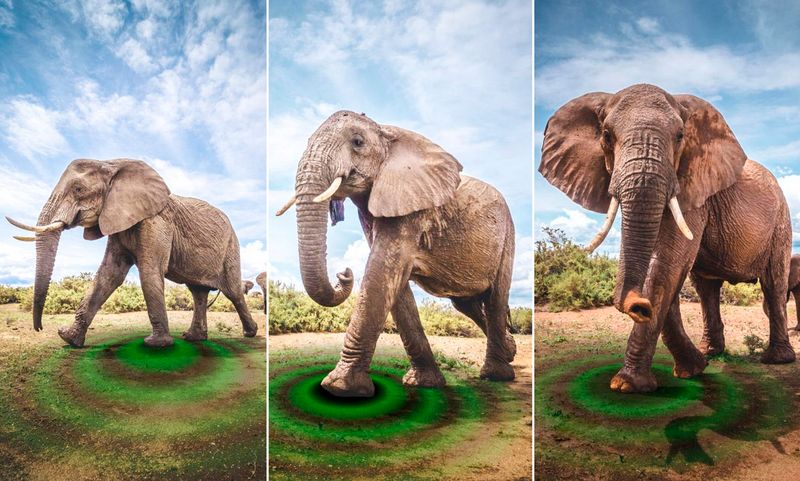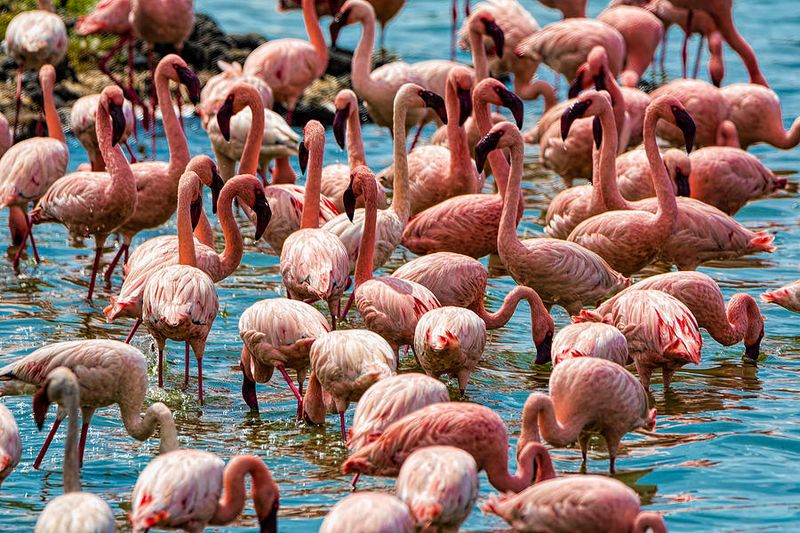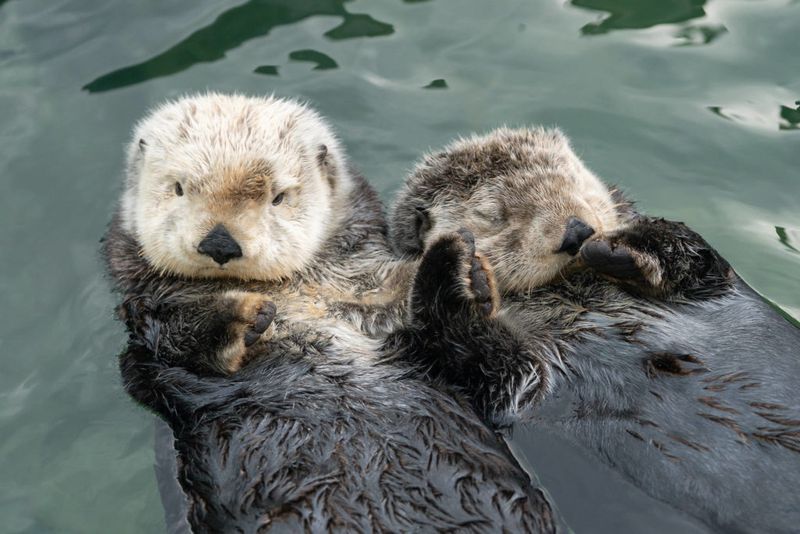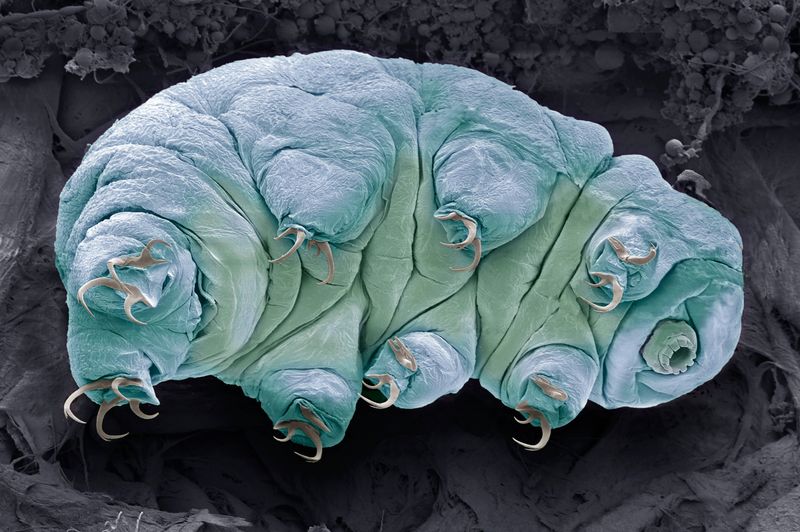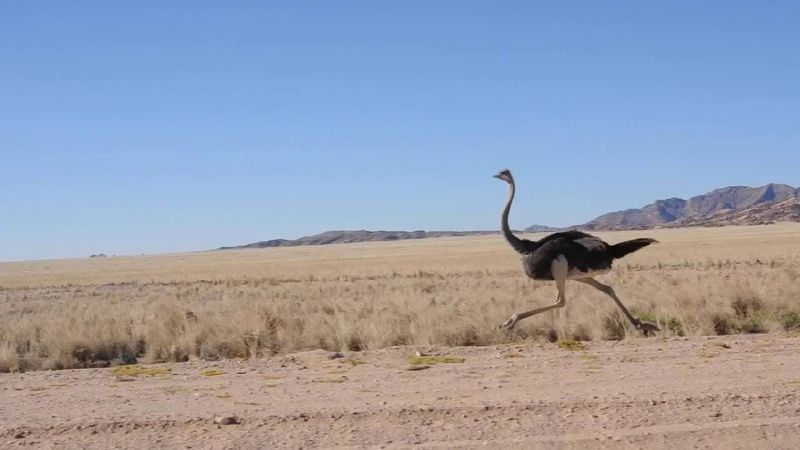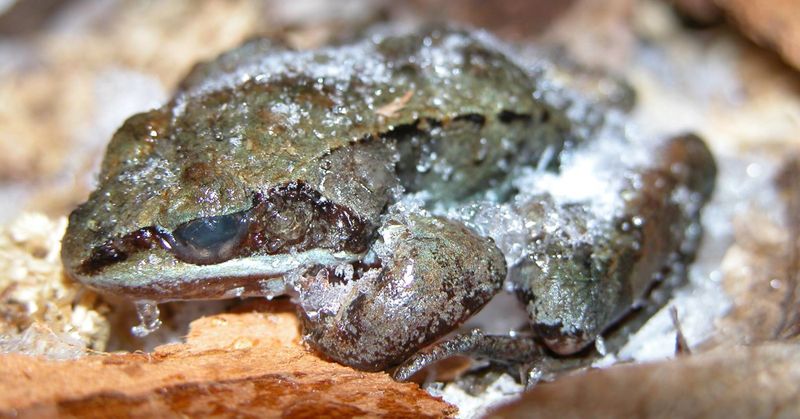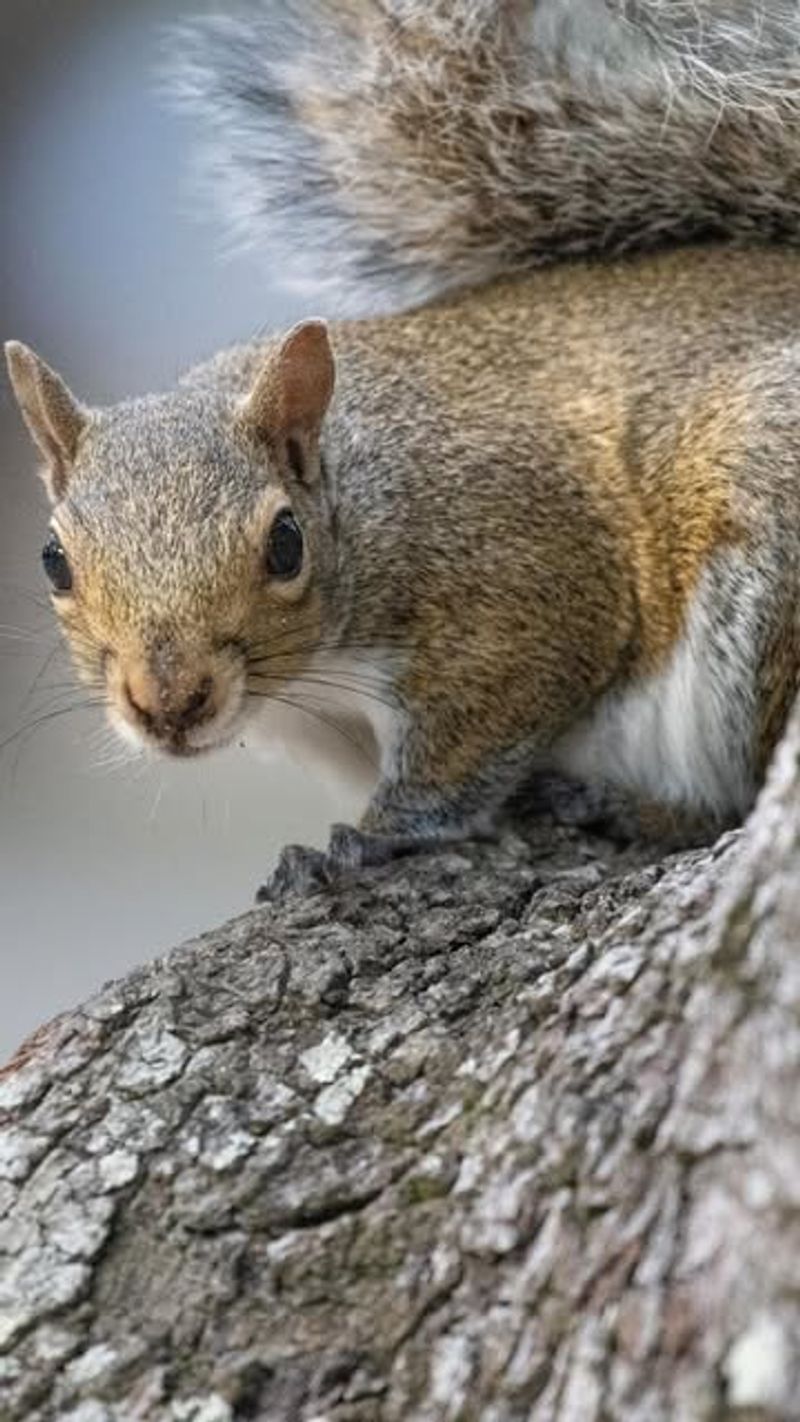The animal kingdom is full of surprises—some adorable, some bizarre, and others just plain mind-blowing. Here are fun facts about animals that will have you doing double takes.
Elephants Can “Hear” With Their Feet
Elephants, with their massive size and gentle demeanor, have a unique auditory ability. They can ‘hear’ distant sounds through their feet, picking up low-frequency vibrations. This skill allows them to detect distant thunderstorms or the calls of other elephants miles away. Picture the vast African savannah, where these majestic creatures roam, their sensitive nerve endings transmitting signals that travel through the earth. It’s a fascinating adaptation for survival, enabling them to communicate and navigate across the vast landscapes they inhabit.
A Group of Flamingos is Called a “Flamboyance”
Flamingos, with their striking pink feathers, are not just visually stunning but also part of a group with an equally striking name: a flamboyance. Their gatherings are a spectacle of color and elegance, as they wade through shallow waters in search of food. Imagine the scene: a sea of pink stretching across a tranquil lake, each bird part of a coordinated dance. Their flamboyant gatherings are a testament to nature’s flair for the dramatic, turning any wetland into a lively celebration of life and color.
Cows Have Best Friends
Cows, often seen grazing serenely in pastures, have a surprising social dynamic. These gentle creatures form strong bonds with certain herd mates, often referred to as their best friends. When separated, they can exhibit signs of stress or anxiety. Picture a sunny meadow, where two cows stand side by side, their companionship as evident as the grass they munch on. This unexpected friendship is a reminder of the emotional depth found in unexpected places, highlighting the complex social structures of farm life.
Sea Otters Hold Hands When They Sleep
Sea otters, those adorable marine mammals, have a charming habit that ensures they don’t drift apart as they nap on the water. They hold each other’s paws, forming a floating chain of companionship. This behavior is not just cute but also serves a practical purpose, especially for mothers keeping their pups close. Imagine the calmness of the ocean breeze as these creatures float together, maintaining unity in the vastness of the sea. Whether in kelp beds or open waters, their tender grip is a symbol of togetherness and survival in the marine world.
Tardigrades Can Survive Space
Tardigrades, tiny creatures often called water bears, are the ultimate survivors. These microscopic entities can endure extreme conditions, including the vacuum of space, intense radiation, and scorching temperatures. Envision a world where these minute organisms thrive, outlasting the harshest environments known to science. Their resilience is mind-boggling, showcasing nature’s capacity to adapt at even the smallest scale. They’re like tiny indestructible tanks, making them one of the most fascinating life forms on our planet.
Sloths Can Hold Their Breath Longer Than Dolphins
Sloths, renowned for their leisurely pace, have an astonishing ability to hold their breath for up to 40 minutes. This surpasses many marine mammals like dolphins. Picture a sloth, motionless in a tree above a serene river, its slow heart rate conserving oxygen as it immerses itself. This fascinating trait is a reminder of the unique adaptations creatures develop in response to their environment. It’s a leisurely yet effective way for these charming animals to navigate their lush habitats, undisturbed by the rush of the outside world.
Parrots Name Their Babies
Parrots, known for their vibrant plumage and vocal talents, engage in a remarkable behavior. Certain species use distinct calls to name their chicks, akin to giving them a signature whistle. Imagine a family of parrots nestled among lush foliage, each chick responding to its unique call. This naming ritual reflects the intelligent and social nature of these birds, showcasing a form of identity and communication that strengthens family bonds. It’s a melodic testament to the intricate social lives that unfold in the treetops.
Ostriches Can Run Faster Than Horses
Ostriches, towering and powerful, are the fastest runners among birds, capable of reaching speeds up to 43 mph. Their long legs and strong muscles propel them across the savannah with impressive agility. Picture the scene: an ostrich dashing over open plains, its strides lengthy and swift, surpassing even the speediest of horses. This incredible ability is a testament to their evolutionary adaptation for survival, allowing them to escape predators and cover vast distances in search of resources.
Frogs Can Freeze and Come Back to Life
Certain frogs, like the wood frog, have the remarkable ability to freeze during winter and thaw in spring. As temperatures drop, they enter a state of suspended animation, their bodies enduring ice and cold. Imagine a frog, encased in frost, awaiting the warmth of spring to revive. This incredible adaptation allows them to survive harsh seasons, lying dormant until conditions improve. It’s a natural marvel that underscores the resilience and ingenuity of life, revealing the extraordinary cycles of nature.
Male Seahorses Give Birth
Seahorses are unique in the animal kingdom for their gender role reversal. Male seahorses carry the eggs and give birth, nurturing the young in a specialized pouch. Picture a coral reef, where a male seahorse hovers, his pouch full of developing embryos. This role reversal challenges traditional views of reproduction, showcasing an incredible adaptation within the marine world. It’s a poignant reminder of the diverse and innovative strategies life employs to thrive, where even the smallest creatures redefine norms.
Pigeons Can Recognize Themselves in Mirrors
Pigeons, often seen flocking in cities, possess a surprising level of intelligence. They can recognize themselves in mirrors, a trait once thought exclusive to humans and primates. Picture a pigeon, perched on a windowsill, studying its reflection with curiosity. This self-awareness highlights the cognitive abilities of these birds, challenging our perception of their intelligence. It’s a testament to the profound insights that can be gleaned from observing even the most common urban dwellers.
Squirrels Plant Thousands of Trees by Accident
Squirrels, those energetic gatherers, have an unintentional yet vital impact on forest regeneration. As they stash nuts for the winter, they forget many, leading to the growth of new trees. Imagine a lively squirrel, darting through an autumn woodland, each buried acorn a potential sapling. This inadvertent role in reforestation highlights the interconnectedness of ecosystems, where even simple behaviors contribute to environmental health. It’s a small but significant part of nature’s grand design, where every action has a ripple effect.
Koalas Have Fingerprints Almost Identical to Humans
Koalas, known for their cuddly appearance and eucalyptus diet, have a surprising similarity to humans: their fingerprints. Remarkably, they are almost indistinguishable from human prints, even under forensic examination. Picture a koala, nestled in a tree, its paw revealing delicate lines and whorls. This unexpected trait highlights the evolutionary parallels found in nature, where adaptations can echo across different species. It’s a curious connection that adds another layer to our understanding of these charming marsupials.
Dolphins Call Each Other by Name
Dolphins, with their playful nature and intelligence, have a sophisticated communication system. They use unique signature whistles to identify each other, akin to calling by name. Imagine a pod of dolphins gliding through azure waters, each whistle a personal greeting among friends. This intricate social behavior underscores their complex social structures and intelligence, offering insights into the rich lives led by these marine mammals. It’s a symphony of sound and interaction, reflecting the deep bonds they share.
Octopuses Have Nine Brains and Blue Blood
Octopuses, those enigmatic cephalopods, are equipped with nine brains—one central and one in each arm. This setup allows them to perform complex tasks and exhibit remarkable intelligence. Picture an octopus navigating the ocean depths, its arms acting with autonomy and precision. Moreover, their blue blood, due to copper-based hemocyanin, grants them resilience in low-oxygen environments. These unique traits are a testament to the elaborate and efficient systems developed by these fascinating creatures, showcasing nature’s endless creativity.

